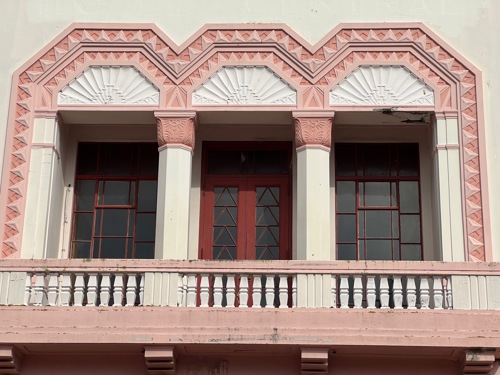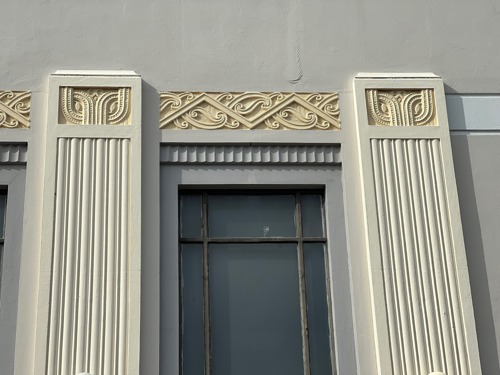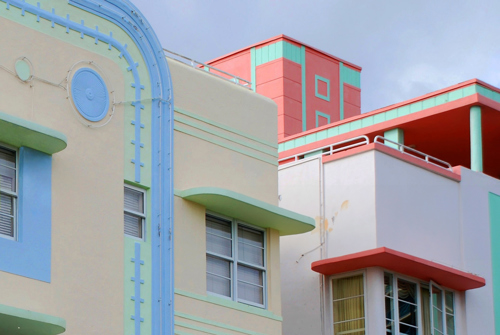bd2 / insights / 100 Years of Art Deco
100 Years of Art Deco
It’s 100 years since the 1925 ‘Paris of the Exposition Internationale des Arts Décoratifs et Industriels Modernes’ which saw the dawn of a new movement that became known as Art Deco - shorthand for ‘Arts Décoratifs’. Art Deco is one of the most recognisable and influential design styles of the 20th Century combining elements of luxury, technology, craftsmanship and, above all style, to capture the spirit of an era which was marked by technological and cultural shifts.
The movement was primarily focused on three-dimensional objects - architecture, interiors, furniture and jewellery - but its influence can also be seen in art and graphics, especially posters most notably in advertising. Art Deco explored ways to make items both functional and aesthetic using new industrial manufacturing techniques and premium materials, such as exotic woods, mother-of-pearl and jade combined with man-made chrome and steel. Art Deco is characterised by the use of bold geometric shapes, streamlined forms, and rich ornamentation which contrasts with the more fluid, organic designs of the Art Nouveau movement which preceded it, Art Deco embraced symmetry, straight lines, and angular patterns. These elements, often inspired by modern technology, travel, and nature, were balanced with lavish materials like lacquer, chrome, glass, and exotic woods, as well as inlays of mother-of-pearl, ivory, and jade. The use of geometry and stylized motifs such as zigzags, chevrons, and sunbursts, as well as its homage to ancient cultures like Egyptian and Mayan art, gave Art Deco a timeless appeal. This combination of opulence with clean, industrial aesthetics reflected the new optimism of the inter-war period and the rise of mass production.

Art Deco’s influence is unmistakable in the architecture of the period. Skyscrapers like the Chrysler Building in New York, shown here from the top of The Empire State Building, with its gleaming spire and terraced crown, is a timeless example of the movement’s impact which still stands out surrounded by a sea of slab-sided blocks. The Empire State Building itself is also technically part of the Art Deco period, the grandeur of the lobby an enduring example of the Art Deco style.


Art Deco architecture also embraced decoration in ways that were both functional and artistic. Elaborate friezes, geometric patterns, and sculptural elements adorned facades and interiors, merging form and function with a sense of theatricality and flair. It’s popularity became global, as can be seen in these examples from Napier in New Zealand which was completely rebuilt in the new Art Deco style following the 1931 Hawke’s Bay earthquake which flattened most of the original town.


Art Deco celebrated modernity with its emphasis on vertical lines, intricate ornamentation, and the incorporation of new materials such as stainless steel and aluminium. The style was most evident in buildings like cinemas, hotels, and train stations, which became canvases for larger-than-life designs, but Art Deco extended beyond architecture into graphic design, jewellery, and fashion. In graphics, it led to the streamlined look of 1920s posters, with their bold, stylized illustrations and sharp lines. Fashion, too, embraced the movement with elegant, form-fitting clothing incorporating geometric patterns, metallic fabrics, and the use of decoration such as fringed clutches, beaded necklaces, and stylized hats.


In fine art, Art Deco’s influence can be seen in the work of artists like Tamara de Lempicka who became known for their portraits and scenes that combined sharp angles, vivid colours, and a sense of sleek glamour. Art Deco art often merged traditional European elegance with America’s enthusiasm for modernity and speed, creating a sophisticated but accessible look that appealed to a wide range of social classes.

Art Deco’s cultural impact grew with the rise of Hollywood, the jazz age, and the sense of optimism and innovation of the ‘Roaring Twenties’. It became synonymous with luxury, modernity, and the excitement of a world that was changing rapidly. The 1920s and 1930s were decades defined by the popularity of cars, airplanes, and cinema — all of which were seamlessly incorporated into the Art Deco vision.
Art Deco was not without its critics though, with a growing feeling that its focus on glamour was a case of style over substance, and others criticised it for being too industrial or too elitist. Despite these criticisms, Art Deco continued to grow in popularity, and by the 1930s, it had become synonymous with the emerging American aesthetic of optimism and consumerism.
As with all trends, especially ones focused on style, they start to become dated but the Art Deco movement’s decline was accelerated by the Great Depression and the austerity of World War II. The style’s emphasis on luxury and excess was no longer fit for the mood of the time, and a more utilitarian, minimalist approach began to take hold in the form of Modernism led by Bauhaus.
Despite its decline, Art Deco has seen periodic revivals and is often referenced in contemporary designs. Its timeless, glamorous quality continues to captivate modern audiences, for example in the work of one of our clients Boodles who produce high-end jewellery pieces that clearly take cues from Art Deco. Many contemporary designers still draw inspiration from Art Deco’s bold geometric forms and luxurious finishes.

The legacy of the movement is of course still standing in the architecture of major cities like Miami and Paris; in Napier New Zealand, as mentioned, which is uniquely comprised almost entirely of buildings in the Art Deco style; and in world famous landmarks like the Chrysler and Empire State towers. Art Deco was a movement that captured the exuberance, modernity, technological advances and optimism of the era, combining a strong sense of style with industrial influence. In architecture, fashion, products, arts and graphics, it defined an era that embraced speed, luxury, and innovation. Whilst its popularity faded, its legacy remains. It continues to inspire new generations of artists and designers who continue to re-imagine Art Deco in their designs today. Art Deco’s style remains a symbol of elegance and innovation.

